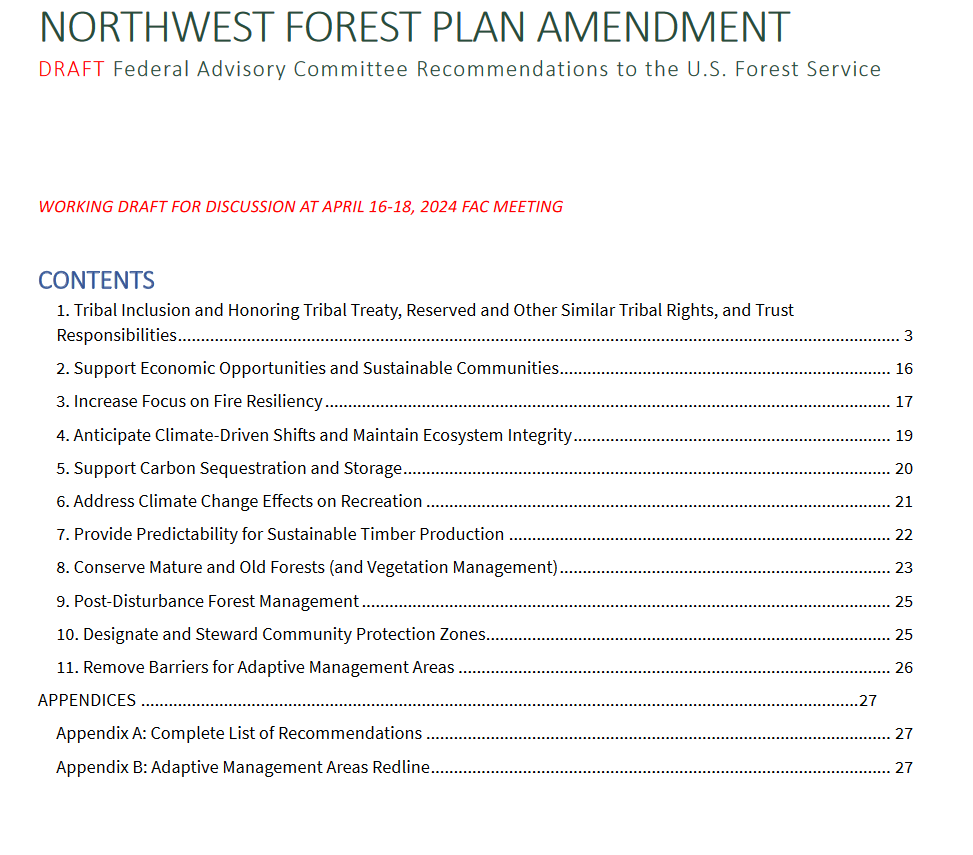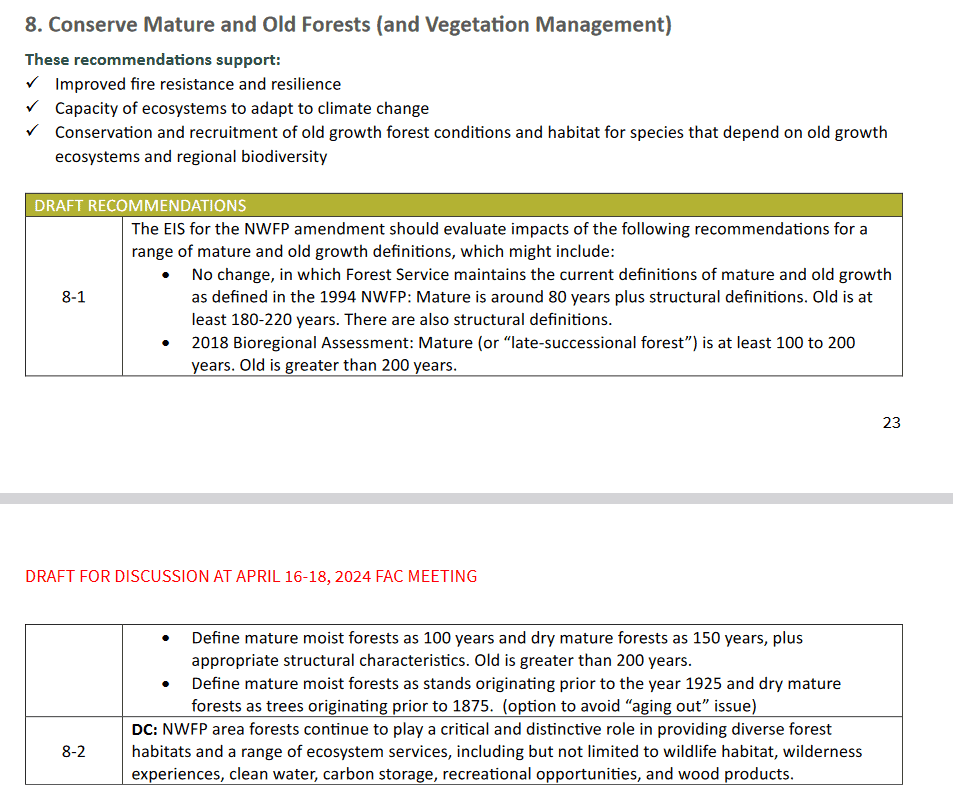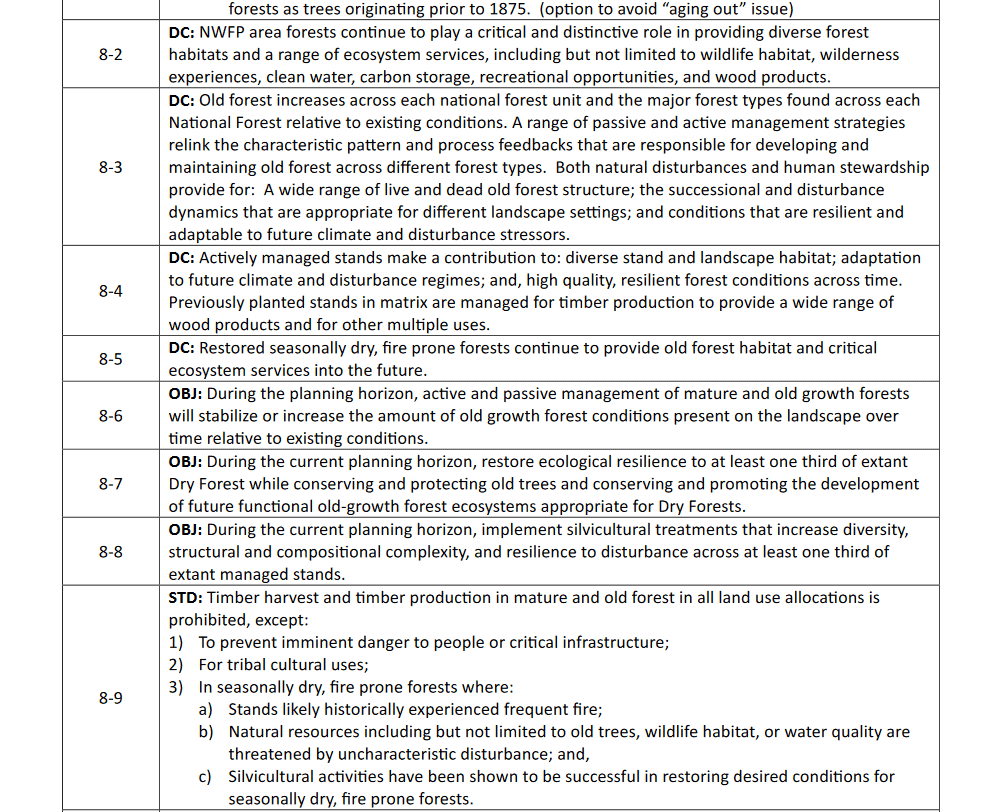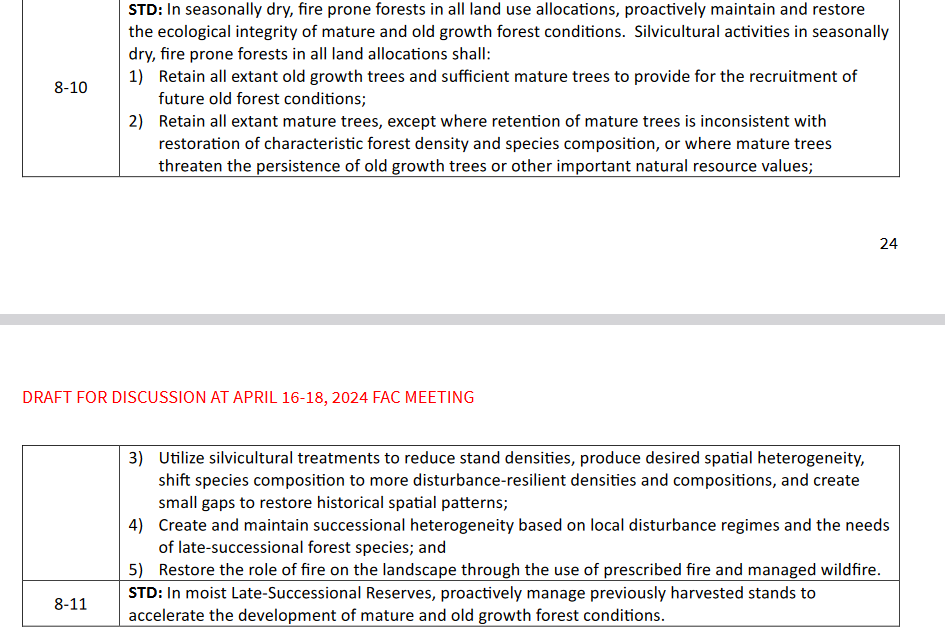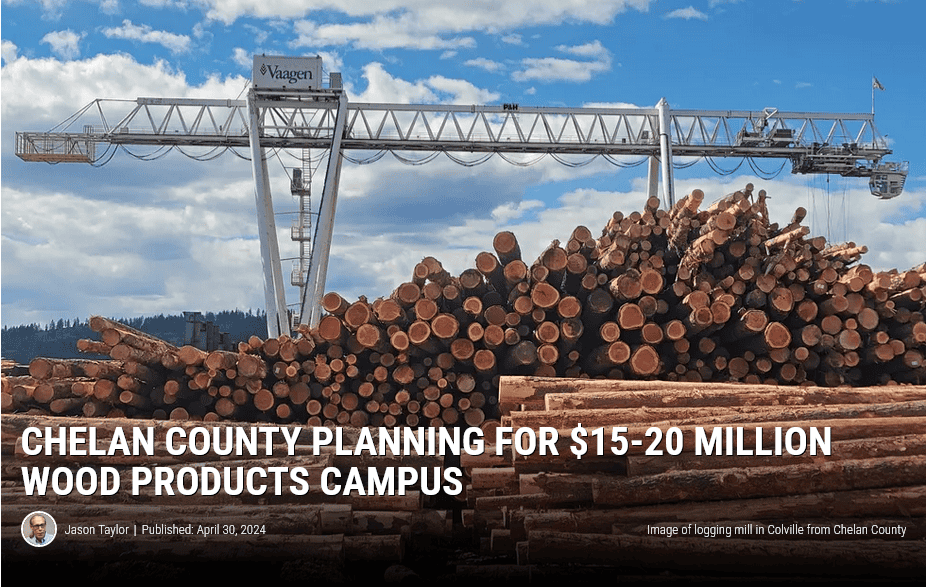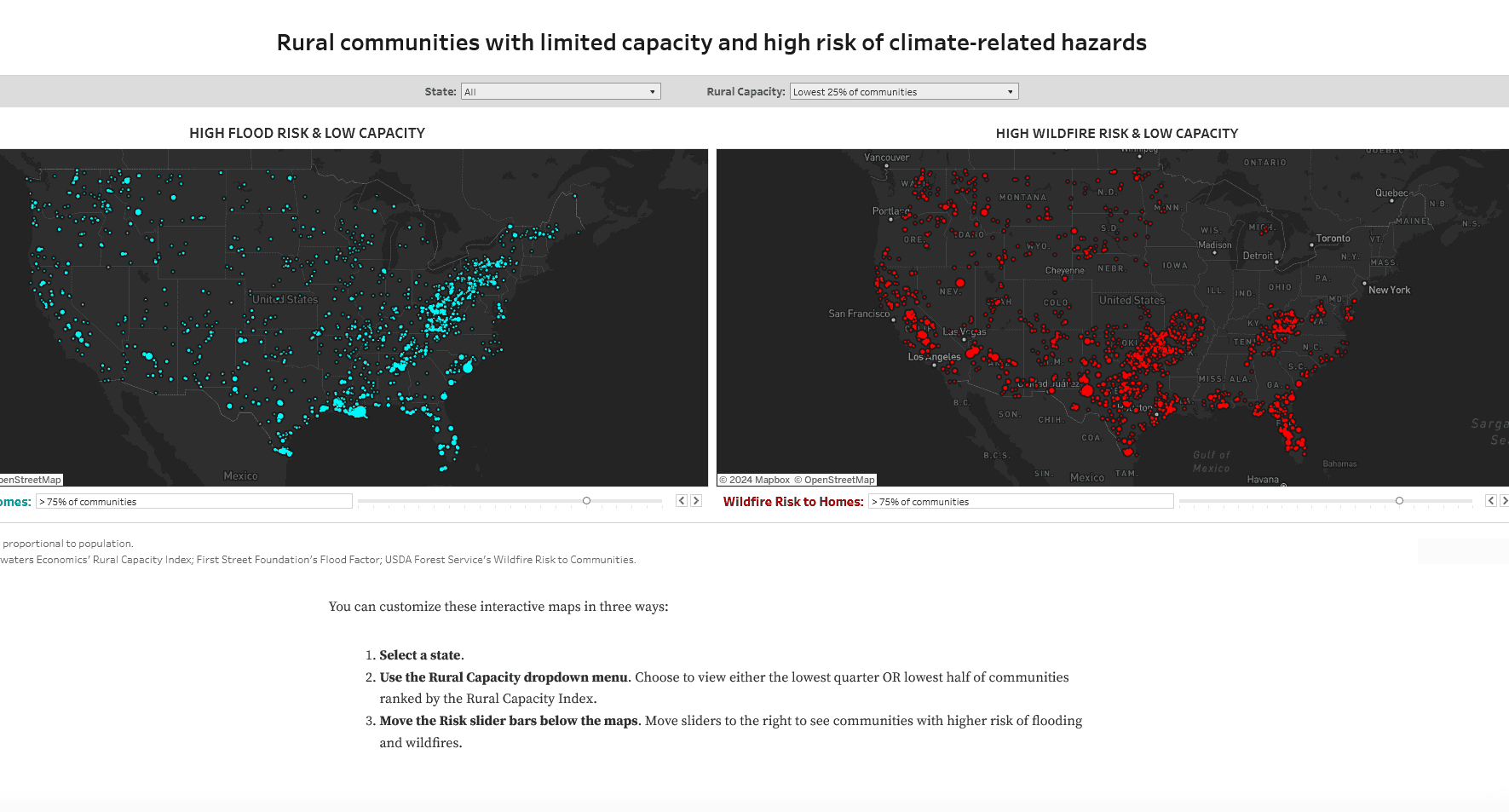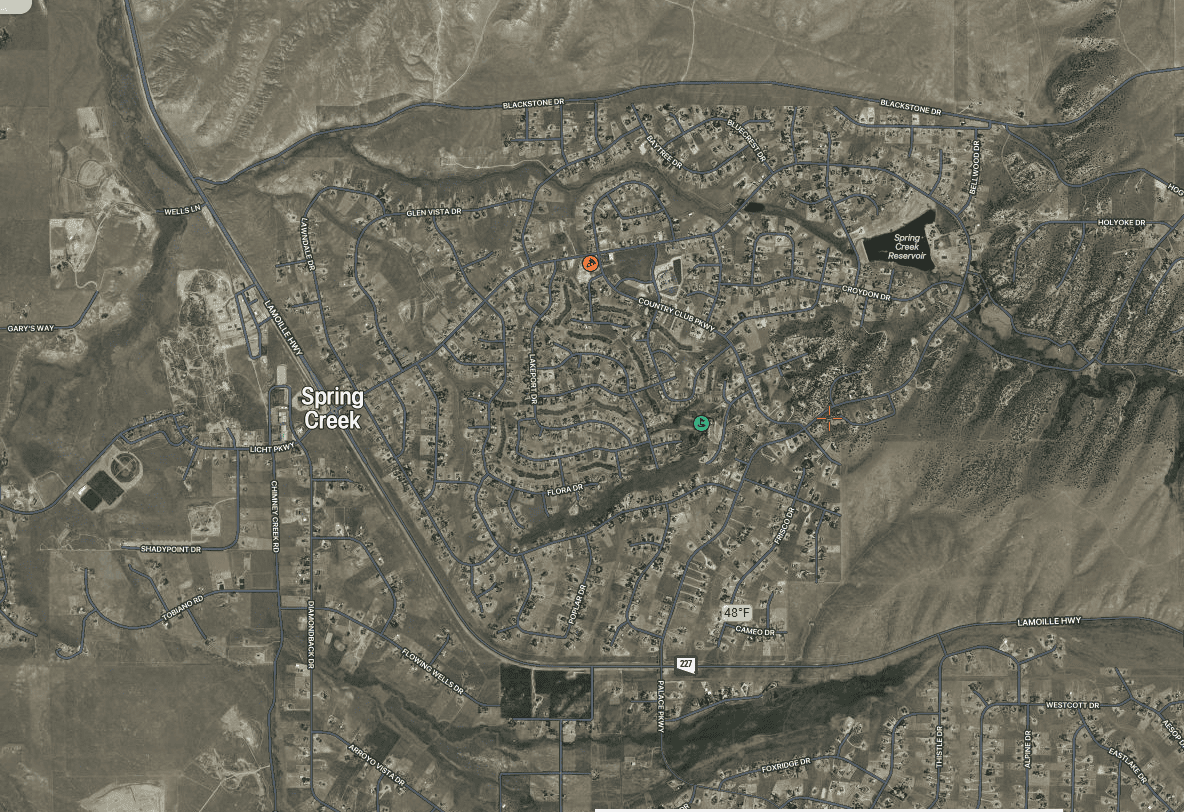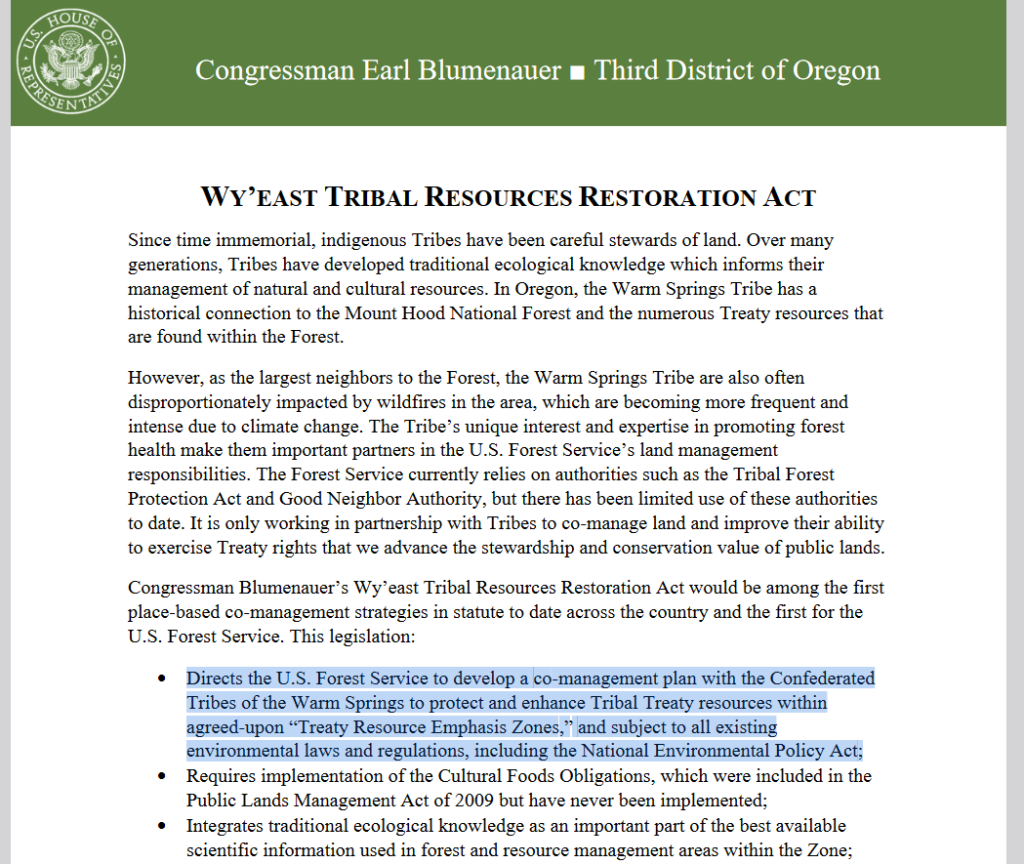
FOREST SERVICE
New (to me) lawsuit
Last fall, Safe Alternatives for our Forest Environment, Conservation Congress and Klamath Forest Alliance sued the Shasta Trinity National Forest for its decision to approve the McFarland Project using a categorical exclusion for “wildlife habitat improvement.” According to plaintiffs, the project would include commercial logging of over 2000 acres, most of which is in a late successional reserve that supports “one of the few successful breeding pairs of the northern spotted owl left in the Shasta Trinity National Forest.”
Court decision in Purgatory Recreation I, LLC v. United States (D. Colorado)
The substantive issue in this case is whether the Purgatory ski resort retained a right to an easement to divert and carry water across national forest land when it conveyed that land to the Forest Service as part of a land exchange. In a quiet title action, the Forest Service objected on the basis that the diversion could detrimentally impact the native cutthroat trout population. On April 15, the court held that, since the land exchange was completed in 1991, and Purgatory should have been aware at that time that there would be no easement, the 12-year statute of limitations for proceeding under the Quiet Title Act had not been met. This doesn’t foreclose Purgatory using other means to access its water right. Here is the court opinion.
Settlement
The parties have settled a case filed in September by Native Ecosystems Council and Alliance for the Wild Rockies against the Middleman Project on the Helena-Lewis and Clark National Forest. The Forest can implement parts of the project that include 4.1 miles of temporary road construction and about 21 miles of road reconstruction, but will forego commercial timber harvest not already under contract. The settlement also limits prescribed burning.
According to plaintiffs, “The settlement stops over 110 miles of road construction/reconstruction and over 5,000 acres of commercial logging in lynx and grizzly habitat.” Michael Garrity is also reported to have said that while he appreciated the Forest Service settling the case, he wished they would have listened to the plaintiffs’ concerns when they commented on the project instead of forcing the issue to court.
New lawsuit: Defenders of Wildlife v. U. S. Forest Service (D. North Carolina)
On April 18, Defenders of Wildlife, MountainTrue, Sierra Club and Center for Biological Diversity filed a lawsuit against the revised forest plan for the Nantahala-Pisgah National Forest. The complaint alleges multiple violations of the Endangered Species Act with regard to the effects of the plan on four endangered bat species: the northern long-eared bat, the Indiana bat, the Virginia big-eared bat, and the gray bat. Plaintiffs claim that the Forest provided misleading information to the Fish and Wildlife Service, and the FWS failed to consider the best available scientific information and drew arbitrary conclusions in its biological opinion, which plaintiffs seek to vacate. A link to the complaint is provided.
Court decision in Rocky Mountain Wild v. Dallas (10th Circuit)
On April 19, the circuit court reversed the district court and upheld the 2019 Forest Service ROD and 2018 FWS Biological Opinion under ANILCA, NEPA, and the ESA, affirming the USFS’s grant of a right-of-way across Rio Grande National Forest land so that a private owner could develop a ski village on its own land. This article reviews the long history of the case. Plaintiffs said the developers still have other steps to complete before they can begin work, and a “concerned local citizenry will be actively engaged.” Here is the court’s opinion.
New lawsuit: Center for Biological Diversity v. U. S. Forest Service (D. Utah)
On April 24, the Center for Biological Diversity, Yellowstone to Uintas Connection, Alliance for the Wild Rockies and Native Ecosystems Council sued the Forest Service over the Ashley National Forest’s Aspen Restoration Project. They allege it violates the Roadless Rule as well as NEPA. With regard to the Roadless Rule, which requires that trees removed must be “generally small diameter,” the complaint says, “It places no limits on the size of trees to be removed, nor does it otherwise demonstrate or ensure that only generally small diameter trees would be removed. The Forest Service ignored repeated public requests that the agency explain how the project would comply with the Roadless Rule.” Plaintiffs claim that the Forest Service did not provide details for the project necessary to determine compliance. This press release includes a link to the complaint.
BLM
Court decision
A district court halted BLM’s practice of removing wild horses in areas where the agency has reached its planned population for the area. The BLM had developed ten-year management plans for two areas, authorizing roundups for “maintenance,” even after achieving appropriate management levels. The court said that new plans with public participation are necessary in this situation. (Best play on words award, from plaintiffs: “I’m hopeful that this decision will pull back on the BLM’s unbridled discretion to remove horses …”)
Court decision in Tohono O’odham Nation v. Department of the Interior (D. Arizona)
On April 16, the district court denied a preliminary injunction to halt construction on 50 miles of the 550-mile SunZia power transmission line from windfarms through the San Pedro River Valley (recently discussed here). The court held that the tribes waited too long to challenge the NEPA sufficiency of the 2015 decision. As for the National Historic Preservation Act, the court held, “BLM (1) complied with its obligation to identify historic properties, (2) considered measures to avoid adverse impacts to historic properties, and (3) consulted with Plaintiff Tribes during each phase of the PA.” The court’s opinion is here.
“Notice of intent to sue”
An NOI is required by the Endangered Species Act, but not for other types of claims we usually see related to public lands. The idea is to give the agency a chance to change its ways before being confronted in court. That doesn’t seem likely with the recently released BLM Public Lands Rule – at least until after the election, but they are getting plenty of “We’ll see you in court” warnings. From the Governor of Utah:
“The added layers of red tape and federal bureaucracy embedded in the BLM’s Public Lands Rule create new roadblocks to conservation work. The health of Utah’s lands and wildlife will suffer as a result. This rule is contrary to the bedrock principle of ‘multiple-use’ in the BLM’s governing law, the Federal Land Policy and Management Act.”
It will be interesting to see what specific legal claims they’ll make, given that the “multiple-use” requirement has always been interpreted to allow a lot of discretion, and the agency should get a lot of deference regarding what will promote “conservation.” (The article also provides perspectives from environmental groups.)
ENDANGERED SPECIES
Notice of Intent to Sue
On April 22, the Fish and Wildlife Service received a notice written on behalf of Animal Wellness Action, the Center for a Humane Economy, Project Coyote, the Kettle Range Conservation Group, Footloose Montana, and the Gallatin Wildlife Association. The parties object to the agency’s February 2, 2024 finding that western United States gray wolf does not warrant listing under the Endangered Species Act. This is the third lawsuit filed against that decision (the other two are discussed here), and it is being attributed to a wolf-torturing incident in Wyoming that represented “everything that’s wrong with Wyoming’s handling of wolves.” (Meanwhile, the U.S. House voted April 30 to end federal protection for gray wolves across the lower 48 states, but the legislation is not expected to be adopted.)
Preliminary injunction in Flathead-Lolo-Bitterroot Citizens Task Force v. State of Montana (9th Cir.)
On April 23, the circuit court affirmed the district court’s decision to limit the wolf trapping and snaring season in Montana to six weeks in January and February when grizzly bears are expected to be denning, based in part on effects of climate change shortening the denning season. However, it also limited this restriction to areas where grizzly bears are known to live. Grizzly bears are listed as threatened under the ESA, and they have been harmed by wolf traps. Plaintiffs are now seeking a permanent injunction. (The article includes a link to the opinion.)
Settlement in Center for Biological Diversity v. U. S. Fish and Wildlife Service (D. Arizona)
On April 25, the parties agreed to a court-ordered deadline to complete overdue listing designations that the Fish and Wildlife Service had proposed for 10 species: two snapping turtles, the white-tailed ptarmigan, the Peñasco least chipmunk and six species of Texas mussels will receive federal protections by the end of the year. Three other species will also receive final designations of critical habitat, including Humboldt martens, and two mussel species will get an initial listing determination. The Northwest’s tall western penstemon flower and Nevada’s Fish Lake Valley tui chub fish will get final protection decisions later. (The article includes a link to the settlement agreement.)
OTHER
Preliminary injunction in National Wildlife Refuge Association v. Rural Utilities Service (W.D. Wisconsin)
On March 6, the NWRA, Driftless Area Land Conservancy and Wisconsin Wildlife Federation filed suit against a proposed land exchange that would facilitate construction of a transmission line across the Upper Mississippi River National Wildlife and Fish Refuge. The complaint alleges violations of NEPA and the National Wildlife Refuge System Improvement Act. A preliminary injunction was quickly granted.
Criminal sentencing
On April 23, a Missouri man was sentenced to two years and six months in federal prison without parole, and was required to pay $30,000 in restitution for cutting down and selling at least ten trees from the Mark Twain National Forest.
Court decision (10th Circuit)
On April 30, the circuit court affirmed the lower court’s denial of a preliminary injunction against the Department of Labor’s requirement that a minimum wage of $15 per hour be paid in federal contracts. This case involved river outfitters operating under permits from the Forest Service and BLM which have typically used a flat fee.
Court decision in Juliana v. United States (9th Cir.)
On May 1, the circuit court issued an order to the district court to dismiss this high-profile case claiming that the government’s actions encouraging a fossil fuel economy, despite scientific warnings about global warming, is unconstitutional.



